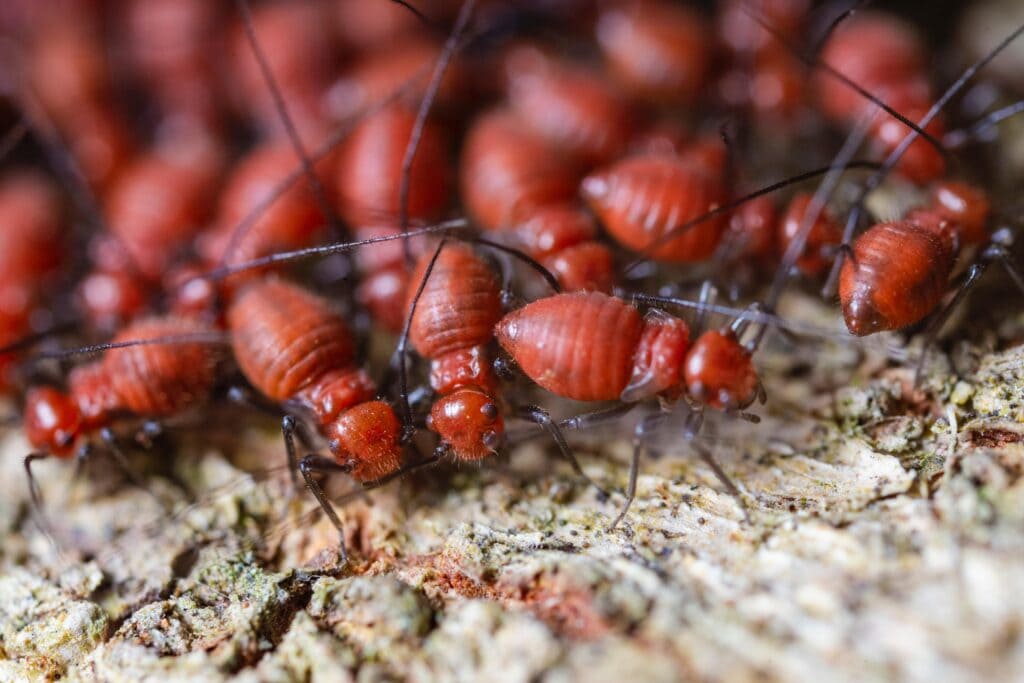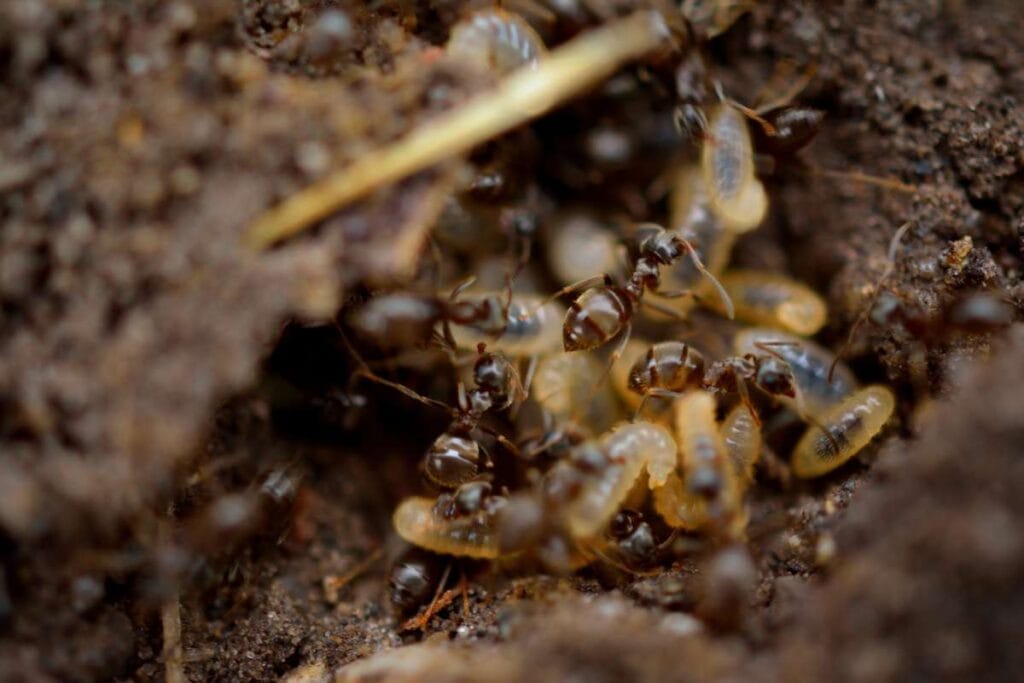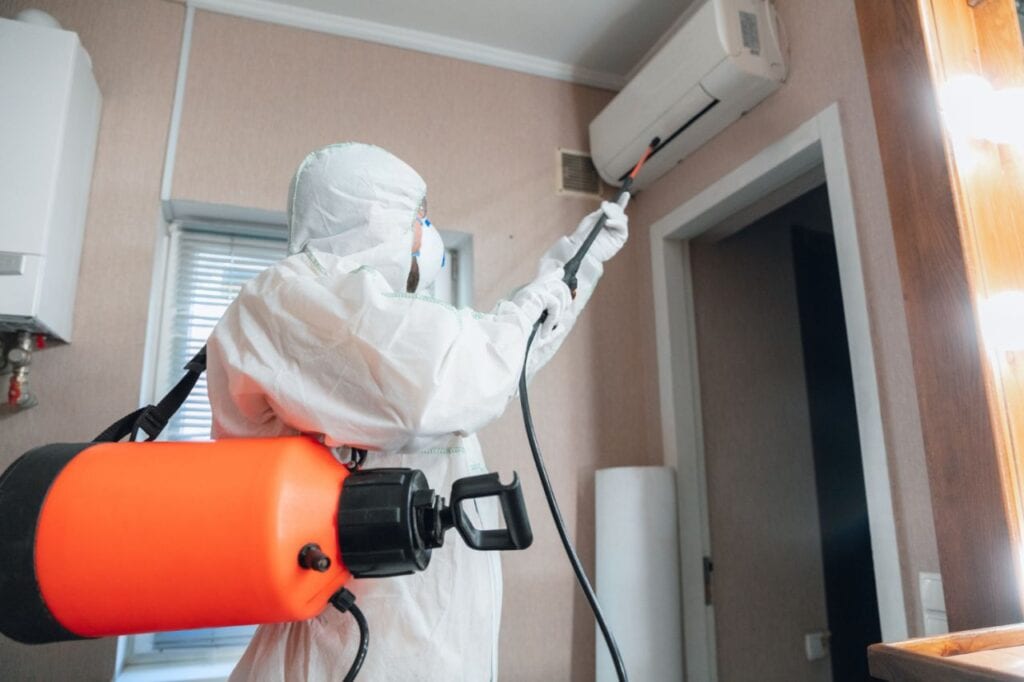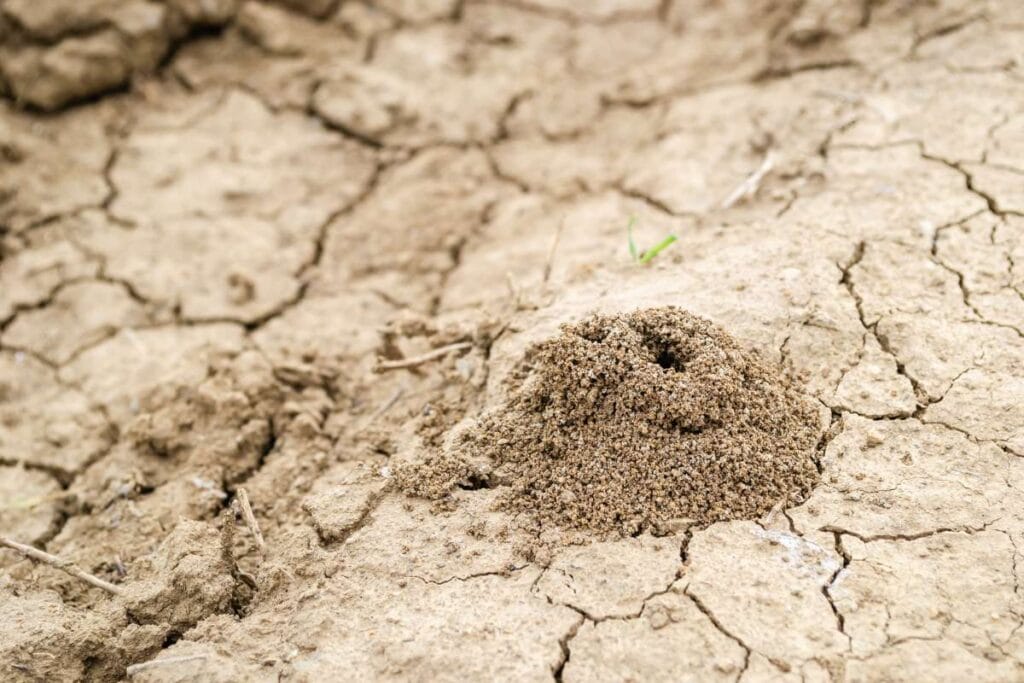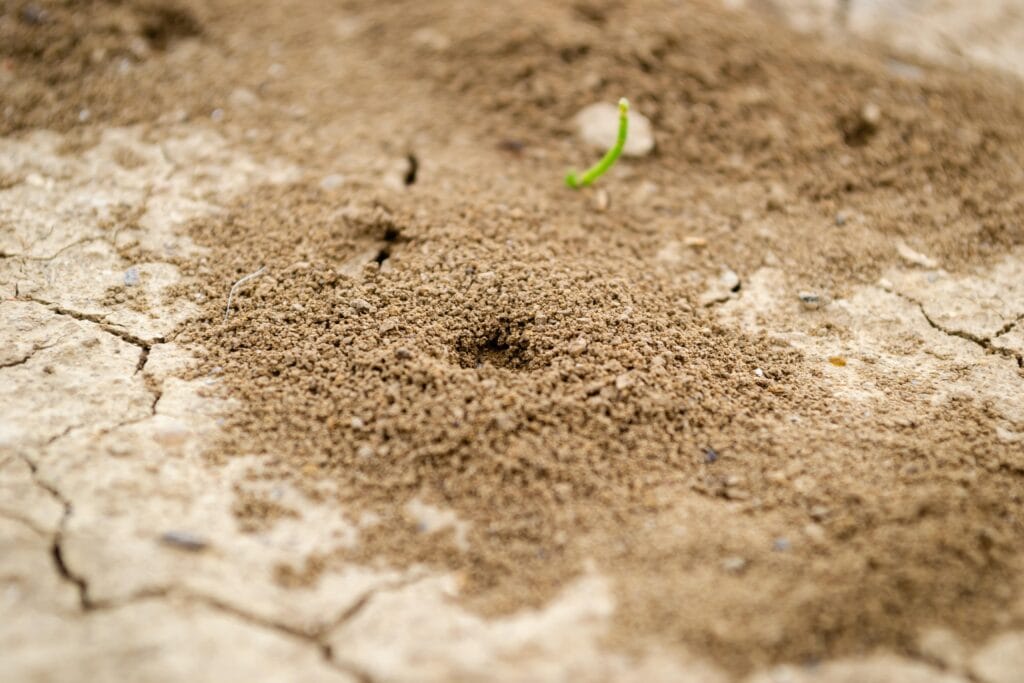Termites are a huge hazard to homes and other structures, and if they are allowed to continue their destructive behaviour, they can cause substantial damage. Consequently, protecting your house from termites requires locating the most efficient remedy. Termite control techniques and technologies abound, and weighing the pros and downs of each is important.
In this comprehensive guide, we, as pest control professionals, explore the complexities of termite treatment, offering you essential knowledge and actionable techniques to defeat these destructive pests.
Understanding The Danger: Identifying Termite Species
To prevail in any conflict or war, you must have a solid understanding of your adversary. How they appear, think, and behave. Your ability to overcome them most effectively will unquestionably be enhanced.
Termite control is another area that can benefit from this idea, not only human conflicts. Termites come in a wide variety of forms. The distinguishing physical features of different species are what set them apart from one another.
Subterranean Termites
This species of termite lives underground, as its name suggests. Even though they build their nests on top of mounds, they are also known to construct elaborate tunnel networks under the earth. They can readily reach food sources through these tunnels.
Keep in mind that termites can't live without plenty of water. The extreme heat will be fatal if they do not. Thanks to the abundance of water in the soil, they won't go dry.
Termites found underground exclusively feed on the sapwood and lignite found in the spring. Leaving behind a trail of holes as big as honeycombs in beehives is no small feat. The termites of this species are easily identifiable by their somewhat bigger heads and black bodies.
Dampwood Termites
The ideal habitat for this termite species is moist, decaying wood, which includes logs, stumps, and fallen trees. Their survival depends on wetness, the same as that of subterranean termites. Their proportionate body size makes them more impressive than other species and substantially bigger than termites found underground. Because of their size, soldiers can grow 20 mm long and swarmers 25 mm long.
Their harm is little, and the marks of damage they leave behind depend on the degree to which the wood has deteriorated. Also, they do not build their nests in the ground. Only the wood is required, and this is especially true if it is rotting.
The commercial pest known as damp wood is abundant in the Pacific. This is because they inflict more harm on residential areas, forests, and construction materials—all important national infrastructures.
Swarmers often search for a suitable piece of wood to carve out a cavity when beginning a colony. While this number of eggs laid by the queen in one year may not seem like much compared to other termite species, it can grow to be large under certain conditions.
Drywood Termites
These are the most common of the insects that consume wood. If you come across hollow tunnels or holes visible through your hardwood furniture, you may be certain that dry wood termites have infested that location.
Drywood termites, in contrast to other termite species, can survive in dry environments for extended periods without water because the wood they eat provides all the moisture they require. Their metabolism breaks down the cellulose-based substance.
The fact that drywoods live in the wood they consume is another intriguing aspect of these organisms. This means that the wooden furniture in your home serves as both a food source and a shelter for these creatures. They look different from their underground relatives. Their brown heads are somewhat smaller than their rather larger bodies.
Conehead Termite
Most people can tell conehead termites apart by looking at their distinctive black, cone-shaped heads. Soldier termites comprise around 20-30% of the population in colonies of this species. Compared to colonies of dry wood and underground termites, where soldiers make up only a small fraction of the population, this is quite remarkable.
The tunnels these termite species can sometimes make are an additional indication of their presence. Compared to other termites, their tunnels tend to be larger and deeper. Also, distinguishing features of their nests include an open design resembling a big, dark-coloured spherical or oval-shaped ball frequently found in trees.
When it comes to their colony, conehead termites are notoriously secretive. However, these eventually emerge above ground after a few years of growth, especially in vegetation like trees, bushes, and buildings.
Like all termite species, coneheads feed on wood, roots, furniture, rails, and paper products, which are cellulose-based, among other things.
What Signs Indicate A Termite Infestation?
Termites can rapidly escalate into a costly issue. Termites can severely damage your home's structure if you don't treat them. Look for signs of termites in your house or yard to take preventative measures against termite damage. A yearly home termite inspection can be part of a termite prevention plan that you can create with the help of a professional.
Damaged Or Hollow Wood
Termite damage to wood can be discovered beneath and behind surfaces such as floors and walls. Because they work out of your walls, termites can be challenging to see. The wood studs in your walls will sound hollow when you tap on them because these little pests have hollowed them out without emerging. In their quest to consume wood for its cellulose, termites create lengthy fissures as they chew. You might find grooves within your walls that look like a honeycomb pattern or a labyrinth. These fissures can erode the wood and cause structural harm as time passes.
Discarded Termite Wings
The presence of termite wings in your home is a subtle sign that termites may be in your area. Termites' flying patterns can be deduced from the presence of these wings near sealed doors, windows, and other access places. Termites fly towards windows in search of light from outside sources. Their purposefully twisting off their wings upon landing is based on pragmatism; following this first flight, they no longer need wings. The constant necessity for careful termite monitoring and control measures is highlighted by the fact that the presence of abandoned wings does not always indicate the termites' death; on the contrary, it may indicate that they are actively trying to create a new colony in the area.
Mud Tubes
The cunningly silent termites build their homes deep underground and painstakingly make their way up to the buildings that provide them with food. These diligent insects make mud tubes about the size of pencils to indicate their subterranean migration. These obvious indications can be seen wherever there is soil, whether near your home or other possible food sources like sheds or trees. Curiously, these termites can only handle changes in humidity or temperature by building elaborate tunnel systems.
In addition to bringing food and water from below to their colonies above ground, these mud tubes shield your home from cold, dry air, creating an ideal habitat for these creatures. To quickly identify and eliminate any infestations, regular inspections must be conducted regularly.
Moldy Scents
Wood is the prefered food source of termites in damp areas, and a musty odour often accompanies their presence. Quick action is required if you notice a musty smell without a clear source. For a thorough examination, call on the expert termite professional. Preventing the possible destruction caused by these stealthy yet dangerous intruders requires prompt detection and action. By acting quickly, you can protect your property and stop termites from making a home in your home. This will keep your home's structure intact and reduce the likelihood of expensive damage.
Discarded Termite Wings
You can find termite wings that have fallen off close to closed doors, windows, and other entry points to your home. The termites are drawn to the light from the windows, so they fly in that direction. They land with their wings twisted off on purpose so they won't have to use them again. Termites may be hard at work attempting to establish a new colony in the area, so just because you find many of their wings doesn't imply they're dead.
Wood Floor Buckles Or Blisters
Termites can be to blame for collapsing floors or blister patches in wood. Wood flooring might have a discoloured or wavered appearance on top due to underfloor damage caused by termites. Because termites feed on the softer wood or supports under floors, you might only find them once they've done a lot of damage below.
Swarmers (Flying Termites)
Flying termites are known as swarmers. They are termites that have left their colony to search for mates and establish new colonies. At particular times of the year, termites swarm, and a swarm might consist of hundreds or thousands of flying termites. Swarming occurs during particular times of the year. If you come across a swarm of flying termites on or near your home, this is a sign that termites have been residing there for a considerable amount of time.
The Most Effective Termite Treatments
The best way to deal with termites is to investigate our options. There is one approach that is superior to all others for treating termites. In the process of removing these damaging pests, this treatment has been demonstrated time and again to be the most successful method.
A specific chemical solution is given topically to the problem locations to give this treatment. The solution's dual purpose is to eliminate the current termite population and forestall further infestations.
Chemical treatments aren't the only thing you need to protect your home from termites; you must also fix whatever else is causing them. Repairing damaged wood or addressing any issues with moisture could fall under this category (wood treatment). Your home can be protected from termites for many years if you take a thorough approach.
Options For Effective Termite Treatment

Termites can be effectively dealt with using a variety of treatment approaches. One possibility is to use liquid termiticides to seal off the region around the infestation. These can be spread to the soil surrounding the affected area. Another choice is to use termite baits, which can be strategically put to attract and kill termites. Another viable choice is heat treatment, which entails increasing the temperature of the affected region to a point where termites perish.
Fumigation is an additional method that isolates the affected area and treats it with gas to eradicate termites. Borate treatments and other wood treatments can also keep termites at bay.
Lastly, termites can be physically prevented from entering the structure by installing sand barriers or stainless steel mesh. The good news is that homeowners can pick and choose from a number of efficient termite treatment alternatives.
Natural Remedies
Termite infestations can be effectively addressed with various treatment alternatives, including eco-friendly natural solutions. Since it contains a termite-killing chemical, orange oil is an eco-friendly option for people concerned about environmental impact.
Termites cannot exoskeleton shed and reproduce when oil is applied, making it an effective natural cure. Boric acid is a natural termite treatment that is highly effective against termites without harming humans or pets. These all-natural solutions are a great alternative to toxic chemicals when dealing with termite infestations.
Chemical Treatments
Among the many methods for getting rid of termites, chemical treatments are among the most strongly recommended. These treatments use specialised chemicals to eliminate termites and stop them from invading a property. The chemicals are usually injected into the affected sections or spread to the soil surrounding the building's foundation. The current and future infestations can be effectively eradicated using this strategy.
It should be noted that only individuals with the appropriate training and experience should provide chemical treatments. To further guarantee the safety of people and the environment, it is essential to adhere to all protocols and safety measures while employing chemical treatments.
Physical Barriers
Termite treatment options that include physical obstacles are successful. These barriers are specifically engineered to thwart termites by erecting an impenetrable physical barrier around a building. They usually go around the outside of a structure and are constructed from materials like metal, concrete, or plastic. Using physical barriers can reduce the likelihood of termite infestation by compelling the pests to either forego their usual habitat or risk being eaten by predators. For households, they offer a long-term, eco-friendly and dependable solution.
Termite Treatments: How Long Do They Last?
Termites are likely already well-known to anyone who owns a home or investment property. Many people wonder, "How long does termite treatment last?" even though there are many treatments for termites.
Termite treatment, on the other hand, typically lasts for around five years, but this is only an estimate. So as not to come across as condescending, the following considerations do contribute to the question of how long a given treatment will last:
- The chemicals used
- The species of termites (subterranean termites, drywood termites, etc.)
- How severe your termite problem is, and the extent of this infestation
- The accessibility of all wood components on your property for pest treatment is important to consider while assessing the home environment.
The application method and the installer's expertise are two additional variables that affect the duration of termite treatments. The efficacy of your barrier termite treatment is enhanced by all these components involved.
Conclusion
Termites are very dangerous to buildings and homes, and if they are not handled, they can do a lot of damage. Identifying the species of termites is important for getting rid of them effectively. Different kinds of termites exist. For example, subterranean termites live underground and build complex tube systems to get to food sources. To stay alive, they need water, and in the spring, they eat sapwood and lignite.
Termites that live in damp, rotting wood like logs, stumps, and downed trees do best there. They are very common in the Pacific, and they do more damage to homes, forests, and building supplies. When they want to start a colony, swarmers often look for good wood to cut out holes in. The most common insects that eat wood are drywood termites. They can live in dry places without water because the wood they eat contains wetness. They can live in the wood they eat, so furniture made of wood can be both food and a place to stay.
Twenty to thirty percent of the termites that live in colonies are coneheads, which are easy to spot because their heads are black and shaped like cones. Their tunnels are longer and wider than those of other termite species, and their nests are open and shaped like a dark ball. They hide, but after a few years of growth, they come out from under the ground and eat roots, wood, furniture, railings, and cellulose-based paper goods.
Infestations of termites can be very bad and expensive, and they can do a lot of damage to your home's structure. Look for signs of termite damage in your home or yard, such as wood that is damaged or hollow, termite wings that have been left behind, mud tubes, musty smells, and wood floors that bend or blister.
As they chew, termites can damage wood by hollowing out screws and making long cracks. Termite wings that have been left behind don't always mean that the termites have died; they could also mean that they are actively trying to start a new colony. Underground tunnels called mud tubes protect your home from cold, dry air and provide food and water for termites. Musty smells are a sign that termites are active.
Termites can also damage the underside of floors, which can lead to floors that collapse or wood that blisters. Flying termites, or swarmers, may have been living in your home for a long time. You can find them during your yearly home termite check. To protect your home and keep termites away, you need to have regular inspections.
Treatment for termites is a complicated process that includes using a certain chemical solution to get rid of the current population of termites and stop them from coming back. But it's also important to fix any other problems that termites are making, like wood damage or water problems. Termite traps, heat treatment, fumigation, bore treatments, wood treatments, and physical barriers like sand barriers or stainless steel mesh are some of the different ways that termites can be killed.
Toxic chemicals should not be used. Instead, use natural treatments like orange oil and Boric acid. Chemical treatments are suggested, but they should only be done by pros who have the right training and experience. These treatments use special chemicals to kill termites. Termite-proof fences and other physical barriers also work.
Termite treatment usually lasts for five years, but this depends on the chemicals used, the type of termites that are present, how bad the infestation is, how easy it is to get to wood parts, how the treatment is applied, and how skilled the worker is. By taking these things into account, homeowners can keep termites out of their homes for many years to come.
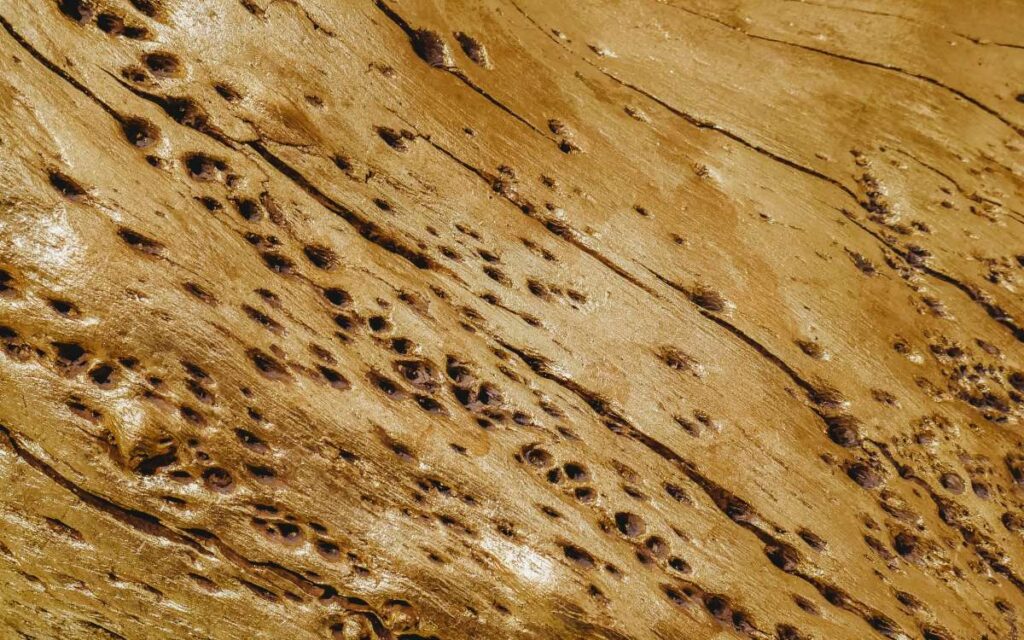
Content Summary
- Termites pose a significant threat to homes and structures, leading to substantial damage.
- Effective termite control is vital to protect properties from these pests.
- Different termite control methods have varying advantages and disadvantages.
- Knowing your enemy, in this case termites, is crucial for effective control.
- Termites vary in species, each with unique characteristics and behaviours.
- Subterranean termites live underground, building nests and elaborate tunnels.
- These termites need moisture to survive and primarily feed on sapwood and lignite.
- Dampwood termites thrive in moist, decaying wood and are larger than subterranean termites.
- They cause damage based on the degree of wood decay and don't nest in the ground.
- Dampwood termites are common in the Pacific region, impacting residential and forest areas.
- Drywood termites can live in dry conditions, feeding on the cellulose in wood.
- They reside within the wood they consume, making furniture a common target.
- Conehead termites are identifiable by their black, cone-shaped heads and large soldier population.
- They build larger, deeper tunnels and nests resembling dark balls in trees.
- Conehead termites are secretive but can become visible above ground in certain conditions.
- Detecting termites early is key to preventing extensive damage.
- Damaged or hollow wood indicates termite activity, often found beneath surfaces.
- Discarded termite wings near entry points suggest potential infestations.
- Mud tubes are a sign of subterranean termites moving from underground to food sources.
- Musty odours in damp areas can indicate termite presence and require quick action.
- Wood floor buckling or blistering might be caused by termite damage below the surface.
- Swarmers, or flying termites, indicate an established termite colony.
- Chemical solutions are effective for both eliminating and preventing termite infestations.
- Repairing damaged wood and addressing moisture issues are also crucial.
- Liquid termiticides can seal off infested areas, applied to surrounding soil.
- Termite baits strategically placed can attract and kill termites.
- Heat treatment involves increasing temperatures to a lethal level for termites.
- Fumigation isolates and treats infested areas with gas.
- Borate treatments and other wood treatments are preventive measures against termites.
- Physical barriers like sand or stainless steel mesh can physically stop termites.
- Homeowners have a variety of effective termite treatment options to choose from.
- Natural remedies like orange oil and boric acid offer eco-friendly termite solutions.
- Chemical treatments administered by trained professionals are highly recommended.
- Physical barriers provide a long-term, eco-friendly solution to termite infestation.
- Termite treatments generally last around five years, but this can vary.
- Factors affecting treatment duration include the chemical type and termite species.
- The severity of the infestation and accessibility of the property also influence effectiveness.
- The application method and installer's expertise play roles in treatment longevity.
- Proper understanding and identification of termite species aid in targeted treatment.
- Regular inspections are crucial for early detection and control of termites.
- Understanding termite feeding habits helps in choosing the right treatment.
- Home maintenance, such as moisture control, is essential in termite prevention.
- Awareness of termite signs helps in timely intervention to minimise damage.
- Combining different treatment methods can enhance overall effectiveness.
- Professional guidance is recommended for safe and effective termite control.
- Homeowners must be vigilant about potential termite threats and signs.
- Termite control requires a comprehensive approach for long-term success.
- Educating oneself about termites and control methods is beneficial.
- Considering environmental impacts is important when selecting termite treatments.
- Regular monitoring and maintenance are key to sustaining termite-free homes.
Frequently Asked Questions
Chemical barrier treatments create a protective barrier around a property, preventing termites from infiltrating. Advanced chemicals are applied to the soil or foundation, forming a barrier that termites cannot breach. This method is effective for long-term protection and is suitable for preventing and eradicating termite infestations.
Yes, bait systems are an effective termite treatment. These systems use specially designed baits strategically placed around a property to lure termites. Once ingested, the baits deliver a lethal blow to the termite colony. Bait systems are particularly useful for eliminating termites at their source and preventing future infestations.
Heat treatment involves raising the temperature within a structure to levels lethal to termites. This method is highly effective in eradicating termites present in the treated space. It's a comprehensive solution that also serves as a preventative measure against future infestations. Heat treatment is particularly advantageous for its ability to reach even the most inaccessible areas.
Fumigation is recommended when dealing with severe and widespread termite infestations. This method involves introducing toxic gases into a sealed space, ensuring the elimination of termites throughout the structure. Fumigation is a highly effective, albeit more intrusive, approach that guarantees comprehensive termite control.
Determining the severity of a termite infestation requires a professional assessment. Pest control experts can inspect your property, identifying signs of termites and assessing the extent of the damage. Factors such as swarmers, mud tubes, and wood damage are considered in evaluating the severity of the infestation.


